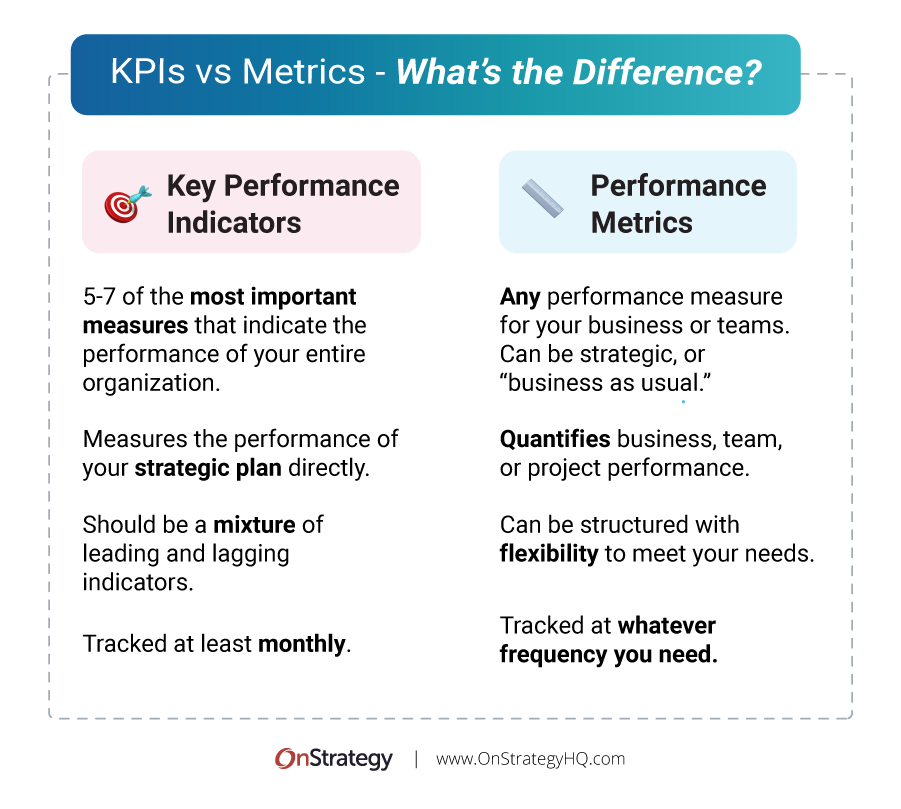Gap Analysis Defined: What is a gap analysis? A gap analysis examines the key gaps in your organization’s current state – like capability, resources, or talent – that you need to overcome to achieve your desired future state. A...
Gap Analysis Defined:
What is a gap analysis? A gap analysis examines the key gaps in your organization’s current state – like capability, resources, or talent – that you need to overcome to achieve your desired future state.
A gap analysis is designed to help you identify what core competencies, resources, or capabilities you need to achieve your bold vision of the future.

The three core questions you need to answer as you conduct a gap analysis are:
Where are we today (our current state)? Where do we want to be in the future (our bold vision of the future)? What do we need to accomplish or acquire to move from our current state to our bold vision of the future?It is an effective tool to help organizations determine what they are doing well, what they need to improve on, and what they are missing or need to invest in to achieve their desired future state.
Keep reading as we break down the various elements of a gap analysis report and outline how this tool is used in different sectors of business.
Your strategic plan is like a flight of stairs.
A gap analysis is not merely a 2-step process that focuses on where the organization is now versus where you want it to be in the future, but a fully thought-out action plan to elevate your organization.
Think of your gap analysis as a flight of stairs–the bottom level where you’re starting is your current state and your desired state is the landing of the floor above. The steps in between that lead from where you are to where you want to be are your action plan or strategy.
Without the steps in between, you’ll never reach the next level. A gap analysis helps you measure and define each step of the staircase and create a strategy that will allow you to climb to your desired future state in a steady and attainable manner. This ultimately allows business to outline clear and realistic goals that they can meet incrementally to achieve sustainable, long-term success.
When to Use a Gap Analysis
A gap analysis is best used when organizations seek to:
Develop a strategy to achieve a vision of success. Implement a change management process. Assess organizational performance or employee skills and training.A full gap analysis can help identify potential challenges, risks, or shortcomings when implementing organizational change. It helps organizations develop strategies to address these gaps and ensure a smoother transition during the change management and strategic planning process.
This tool identifies areas of strength and areas of improvement within an organization’s performance, skills, or overall efficiencies and allows organizations to assess the skills and competencies of their employees, and ultimately, identify gaps in knowledge or training.
This analysis helps plan targeted training and development programs to bridge the gaps and ensure employees have the necessary skills to perform their roles effectively.
Further, it can be used to evaluate existing processes and identify gaps in efficiency, effectiveness, or compliance. This allows organizations to prioritize process improvements and implement changes to close the gaps and streamline operations. It can also guide the allocation of resources and efforts towards streamlining overall performance .
Importance of gapanalysis to strategic planning.
A gap analysis is helpful during any strategic planning process to help organizations align what they currently have with what they need to achieve their long-term vision.
A gap analysis can also be used to compare one’s own organization with one’s competitors to determine what gives their competitors an edge in the industry.
3 Benefits of a gap analysis to drive performance and business improvement.
A gap analysis is important to your overall business strategy in several ways:
Surfacing Areas of ImprovementIt helps organizations and businesses pinpoint which aspects of their business process or performance fall short of expectations and guides them in assessing areas of improvement. Resource Allocation
Resource allocation is an essential aspect of strategic planning and conducting a gap analysis before moving forward with your strategic planning process ensures that you can determine the best way to utilize those resources effectively. A Place to Hunt for Goals
A gap analysis helps organizations determine realistic goals and define what is achievable. (This is not to say you can’t set lofty ambitions, but creating a strategy informed by your own gap analysis tools allows you to set achievable goals that bring you closer to your big, bold vision in a way that is sustainable and longer lasting.)
Areas to Assess for Your Gap Analysis
It’s not enough to just say, “I want to earn $X amount of revenue by this timeframe” or “We want to be the leading provider of (insert service) in our market”.
Those are fine goals to have – but they’re too vague to be useful in a gap analysis, which calls for more defined targets. A gap analysis works best when your goals are specific.
A good starting point could be to focus on specific areas of your organization that need improvement or development. A gap analysis can ultimately be used to look at both internal and external factors or shortcomings within the organization regarding how the organization meets customer or market needs.
Borrowing from the balanced scorecard method, you can break down your areas of focus to these key areas in your organization, such as financial, customer, business processes, and organizational capacity. Here are some more specific examples:
Skills of your staff that need improvement. Roles within the organization that need to be filled. Product gaps. Market gaps. Business processes or systems that need more efficiency. Technology utilization.Examples of gap analysis areas of focus.
By looking at specific focus areas, you can see which initiatives are proving successful versus what initiatives need improvement. We’ll go more into these examples below:
Performance gap analysis
A performance gap analysis evaluates the difference between the performance level that an organization currently holds versus its desired future performance. A few practical gap analysis examples:
Shipping and fulfillment times. Marketing performance data, like SEO rankings, web traffic, conversions. Sales conversion rates or lead conversion rates. Profit margins. Customer retention data.
Marketing gap analysis
This is a sector that assesses how well your product or company meets the needs of the market or customers, whether by services or products offered. It analyzes gaps between customer expectations versus company fulfillment. A few practical examples:
Product expansion opportunities. Market expansion opportunities. Market segmentation.As shown in the illustration above, here is what an example of a marketing gap analysis may look like:
Ideal Future State: Be a top 10 ranked project management software in the SaaS market for the construction, architecture, and engineering space.
Current State: We’re currently ranked in the top 25 by independent reviewers and are currently outside of page 1 rankings for keyword searches on Google.
Action Item 1: Invest in a website overhaul emphasizing SEO-optimization to improve our brand visibility in Q1 of 2024.Resource requirements: An outside agency to manage our SEO and develop pages to rank better. SEM to rank our site better until we earn organic rankings.
Action Item 2: Increase our organic brand presence by creating a content marketing strategy to feed a lead nurturing funnel from Q1 of 2024 to Q4 of 2025.Resource Requirements: A content marketer to develop a holistic content marketing strategy and hard collateral that includes a library of blog posts, whitepapers, and webinars.
Action Item 3: Improve our independent rating from 18 to 8 in Q4 of 2025.Resource Requirements: 3 core new application features that are missing from our tech stack are required to break the top 10 threshold. This is a development investment of $90,000.
PR Strategy: Collecting user reviews and submitting them to commonly used software ranking sites to improve our ranking. This is a hard cost of $15,000.
Future State: Ranked in the top 10. Be a top 10 ranked project management software for the construction, architecture, and engineering space in 2026.
Skills gap analysis
This analyzes the current skillset of current employees versus the skills needed to meet the growing demands or goals of the desired future state. This may assess training needed for current employees or roles and positions that may need to be filled by new hires or outsourced companies.
AI capabilities Technological capabilities Service delivery capabilitiesProduct gap analysis
This analyzes the gap between features, pricing, and overall qualities of a product or service against the customer needs and the competition in the market. It can even include product upgrades that haven’t been done by your competition, like utilizing AI features in your software products.
Product/market fit5 Key Components of a Gap Analysis
There are a few different approaches one can take to perform a gap analysis, but in general, it consists of these five main components:

Your organization’s current state
Once you know where you want your organization to go, you must assess the point from which you’re starting.
Evaluate your current performance in the desired focus areas by gathering data, conducting surveys, reviewing processes, and assessing the efficiency of your own current processes, systems, and resources.
Your desired future state.
Where do you want to see your organization in the next 3-5 years?
Clearly define the goals and the level of performance you would like your organization to achieve. You can base this on your levels of achievement or on your competition and how you’d like to gain an edge over them.
A careful analysis can provide a benchmark for comparison and define the gaps that need to be filled.
Time frame to get there.
It is also helpful to set timelines for achievement. How long do you expect (or hope) to get to your future state? Set both long-term goals and short-term benchmarks to track your progress along the way.
The gap between where you are now vs. where you want to be.
Now that you’ve identified where you want to go and where you are, you can assess in which areas you’ve already met your goals and in which areas you still have work to do. Within these, you can now determine the gaps and deficiencies in your organization. It’s also a good idea to consider the underlying causes of the gaps so that you can determine how to move forward.
When identifying your gaps, analyze the root causes that create them–maybe your organization lacks the technology or human resources side, or you need to hire or outsource people skilled in a specific area.
Conduct interviews, research, polls, or employee surveys to gain insight into your employees, customers, and stakeholders.
The strategy to bridge the gap.
Now that you’ve identified the gap and the cause, you can begin to build an action plan to address it. This type of planning and strategizing can be done through various methods, but generally, you should execute these three steps:
Set clear goals. Identify resources needed. Outline the steps that need to be taken to address the deficiencies.Once the action plan is in place, be sure to implement regular reviews and find a way to monitor your progress. Regular monitoring and evaluation help track the effectiveness of your strategy and help you determine when to adjust it. The gap analysis process should be dynamic in order to meet the changing needs of the organization.
Tools to conduct a gap analysis.
There are different elements of a gap analysis to consider that would need various tools. Conducting a gap analysis requires efficient organization of ideas and data points using a gap analysis template. Use our free gap analysis template to begin your process. After you fill out your template, you need to have a means of measuring progress and performance indicators.
A strategic planning software is just what you need for the task! OnStrategy’s strategic planning software allows you to track progress of your goals and initiatives through OKRs, KPIs, and other methods of measurement. Assign certain people to tasks and make them the owners of tracking the performance of their assigned tasks. You can also utilize a project management software to help keep projects aligned with your overall goals.

What Is the Difference Between a Gap Analysis and a SWOT Analysis?
When discussing a gap analysis, some people may think they are exactly like a SWOT analysis. However, there are some general differences. A SWOT helps companies determine their competitive advantages by assessing both their internal strengths and weaknesses as well as external opportunities and threats.
A gap analysis, as we’ve stated, looks primarily at the deficiencies the organization has that prevents them from moving from its current state to its desired future state, and goes a step further by outlining the steps to bridge those deficiencies.
A gap analysis is primarily forward focused, while a SWOT looks at the current condition.
A gap analysis and SWOT analysis can be used together to perform a comprehensive assessment and develop effective strategies for improvement. As a SWOT identifies weaknesses in a company’s current strategy or business process, it can be used with a gap analysis to pinpoint the gaps and areas of improvement.
Strategic vs. short-term gap analysis.
Strategic and dynamic gap analyses differ in a few ways:
Purpose and scope
A strategic gap assesses the needs and requirements for an organization to achieve its vision and long-term goals.
In contrast, a short-term, or “dynamic gap analysis” examines an organization’s dynamic aspects and aims to improve efficiency, effectiveness, and agility in response to changing circumstances – How must you change the short term to meet your efficiency, effectiveness, and agility targets?
Timeframe and frequency of analysis
A strategic analysis typically considers long-term or future-oriented gaps. It examines the gaps between its current state and its desired state over an extended period, often involving strategic planning cycles. Due to its long-term focus, a strategic gap analysis is typically conducted periodically, such as annually or during strategic planning cycles.
A dynamic analysis, on the other hand, considers shorter-term gaps. It focuses on identifying immediate or near-term gaps to improve specific processes or systems within a relatively shorter timeframe. Dynamic analysis is often performed more frequently and on an ongoing basis.
Level of detail
A strategic analysis often takes a broader perspective, encompassing the overall organization and its strategic objectives. It provides a high-level view of the gaps that need to be addressed to align the organization with its strategic goals.
A dynamic analysis tends to be more detailed and specific. It may involve examining specific processes, functions, or systems within the organization, dissecting them to identify gaps, and proposing targeted improvements.
Conclusion
Conducting a gap analysis is an essential step in developing and executing a strategic plan. It helps you understand where your organization currently stands, identify areas of improvement, and bridge the gap between your current state and future goals. By conducting a thorough analysis and evaluation of your business needs, market trends, and skills, you can make informed decisions and implement effective changes to propel your strategic plan forward.
A gap analysis can be an effective tool to help your team realistically assess the deficiencies in your organization that are currently interfering with your ability to reach your future goals. It helps you create a clear, actionable strategy with attainable steps to bridging the gaps in your organization.
Read the next article, Gap Analysis Template to Elevate Your Strategic Plan for instructions and examples to assist you with your own gap analysis.
FAQs
Gap analysis is a powerful tool to drive your strategic plan forward. By comparing your current state with future objectives, it identifies performance gaps and areas for improvement. This data-driven process guides strategic planning, informs decision-making, and facilitates goal setting for successful initiatives.
To successfully conduct a thorough analysis, you need to use a gap analysis template to organize your initiatives, create action items, and determine key areas of focus. After your template is complete, you need a reliable means of measuring progress, performance, and completion of initiatives. We recommend a strategic planning software tool that allows you to track OKRs, performance indicators, and your goals.
The five elements that make up a gap analysis include the current state, future state, time frame to completion, gaps to bridge, and strategy/action plan.
The post Gap Analysis Explained: What is a Gap Analysis + Why Your Strategic Plan Needs One first appeared on OnStrategy.







![Change Is Certain, Our Leadership Is Not [6 Essentials of Leading Amidst Change.]](https://54493.fs1.hubspotusercontent-na1.net/hubfs/54493/Newsletter-images/images/bridges-transition-model.png)

![5 Unproductive Listening Patterns [And How to Avoid Them]](https://i.ytimg.com/vi/seZV8o1qUIE/maxresdefault.jpg)






